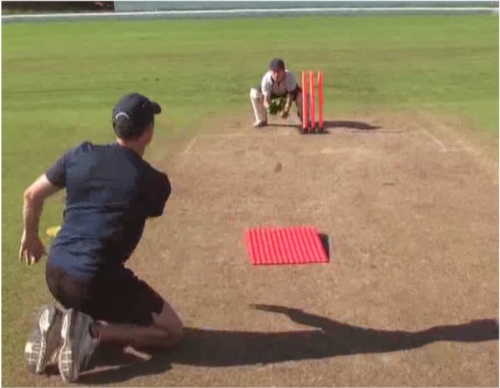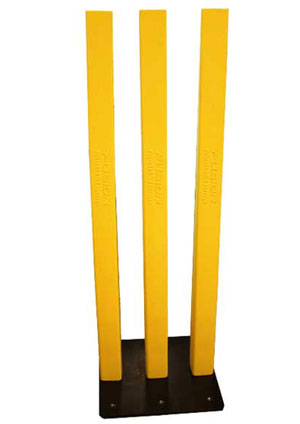|

Variation of drill is one of the big challenges for a coach working with keepers. As we discussed last week, we should always remember that we need to keep the practice relevant to the match as possible.
Here are a number of standing up drills that support the staple diet of shadowing that we covered last week.
1. Katchet drill
Place the Katchet board on a length in front of the keeper (3-5 metres from the stumps) and skim balls off of the board to the keeper. The ball will naturally deviate off of the board and simulate deviations off of the pitch or the bat.

You can also slant the board slightly to get different reactions from the surface. The closer the board gets to the keeper the quicker the keeper shall have to be to react to deflections. A keeper will be amazed how quick their reactions can be if their posture (Z' position) is good.
An additional Katchet in front of the existing board adds a further distraction and different deflections from a more extensive length.
2. Fusion MultiStump drill
Place the MultiStumps either just in front of the keeper (to simulate a back foot nick) or just over a metre in front of the popping crease (to simulate the front foot nick) and throw balls that either miss or clip the MultiStumps going through to the Standing Up Keeper. The deflections vary according to the part of the stump that the ball hits and gives a good variety of the deflection and distraction.

Remember to complete the drill to simulate both right and left hand handed batsmen.
This drill can also be performed with spin bowlers instead of coach throwing to increase the specificity. A bowler can practice their own drills whilst servicing the drill need of the wicket keeper.
3. Bat nicking drill
The coach kneels on the ground directly in front of the keeper at a distance simulating the space between popping crease and a keeper standing up to the stumps.
The coach holds the bat half way down the blade with dominant/bottom hand and with top hand on the handle opening the face of the bat towards the sky.
The feeder delivers the underarm ball from a distance no further than 5 meters between waist and shoulder height of the coach. The coach nicks the ball or distracts the vision of the keeper with the bat.
An upgrade would be to include a slip fielder so that he/she can get used to taking catches and viewing the ball with a keeper obstructing the flight path.
Good "nickers" develop good catchers so practice this skill as a coach!
4. Hitting off the pitch
You can simulate the angles of deviation off of the pitch using a bat and cricket ball or tennis racquet and hard tennis ball. Use a half volley drop feed for and hit a one handed shot from the parts of the pitch that a bowler would pitch the ball.
You can simulate the pace and deviation types that a specific bowler would create. So for example, to simulate an off spinner to a right hand batter you can hit from length just outside off stump and hit into the top of off stump, just outside off stump (simulating arm ball) and just outside leg stump (simulating big turning ball).
You can use Fusion MultiStumps in the stump holes so that the keeper gets nick-like deflections off of the stumps, this adds again to the practice.
5. Batting glove/Fusion MultiStump swishing drill
Either using a batting glove or Fusion MultiStump, the coach swings the obstacle in front of the keeper simulating cuts and drives. Even if you don't hit many balls, the motion of the swing and the noise provides realistic stimulus that will test the keepers ability to stay relaxed and focus on the ball.
The deflections off of the glove or MultiStump are also realistic.
Have fun with these drills, use them alongside the shadowing drill from last week and see your keepers confidence go through the roof when standing up to the stumps.
|

.jpg)



.jpg)

